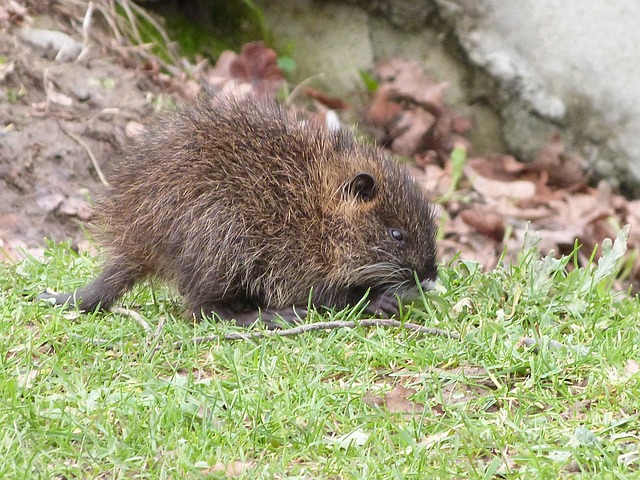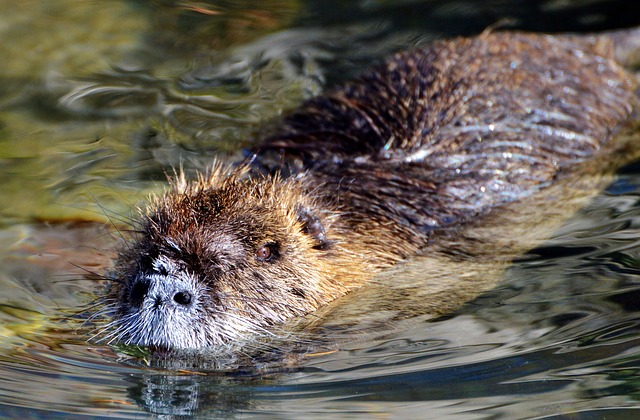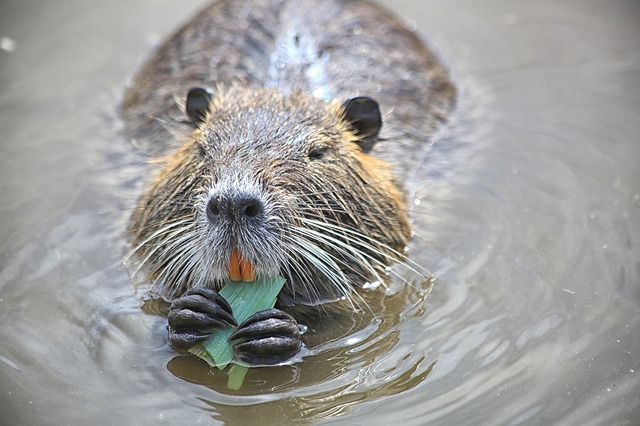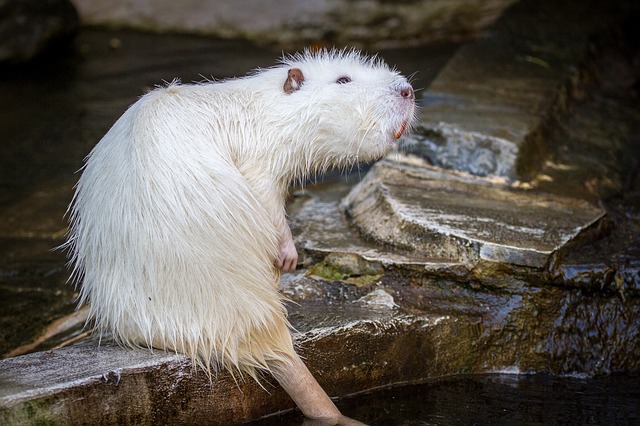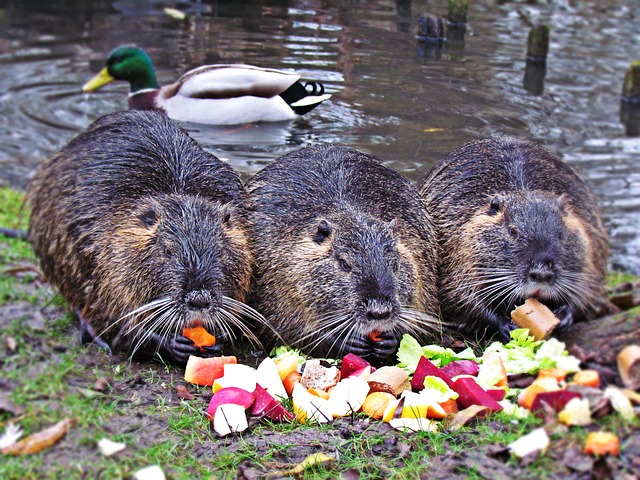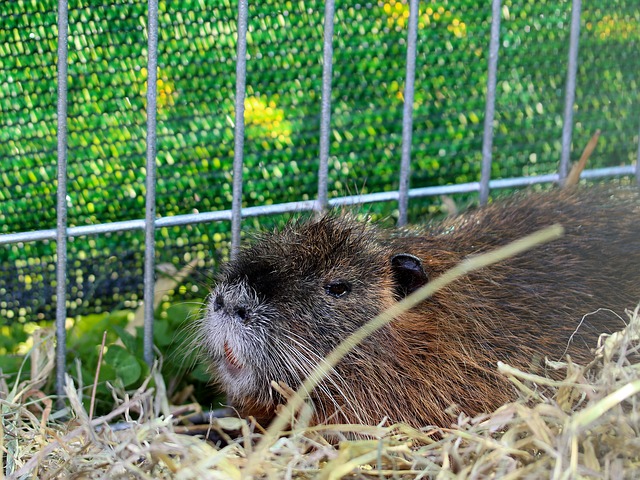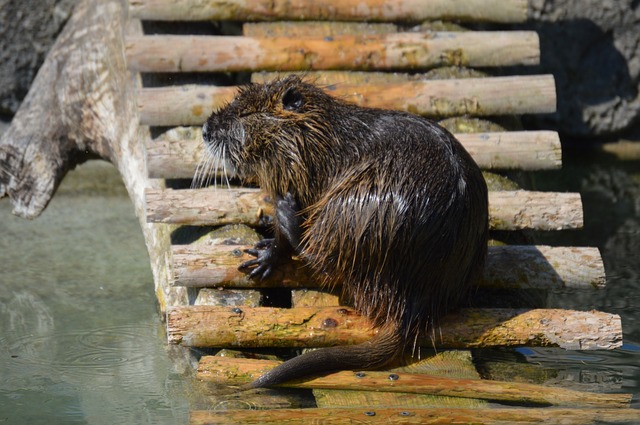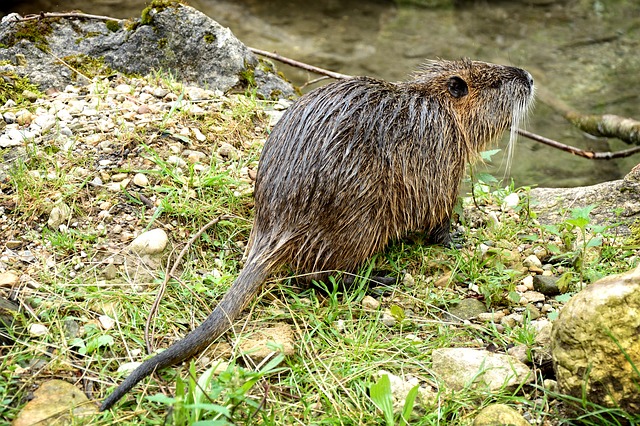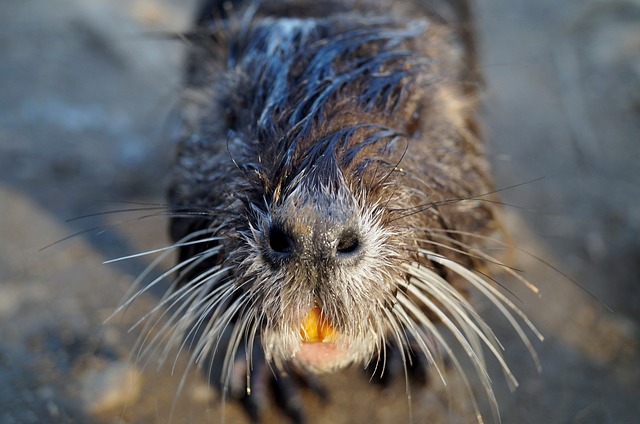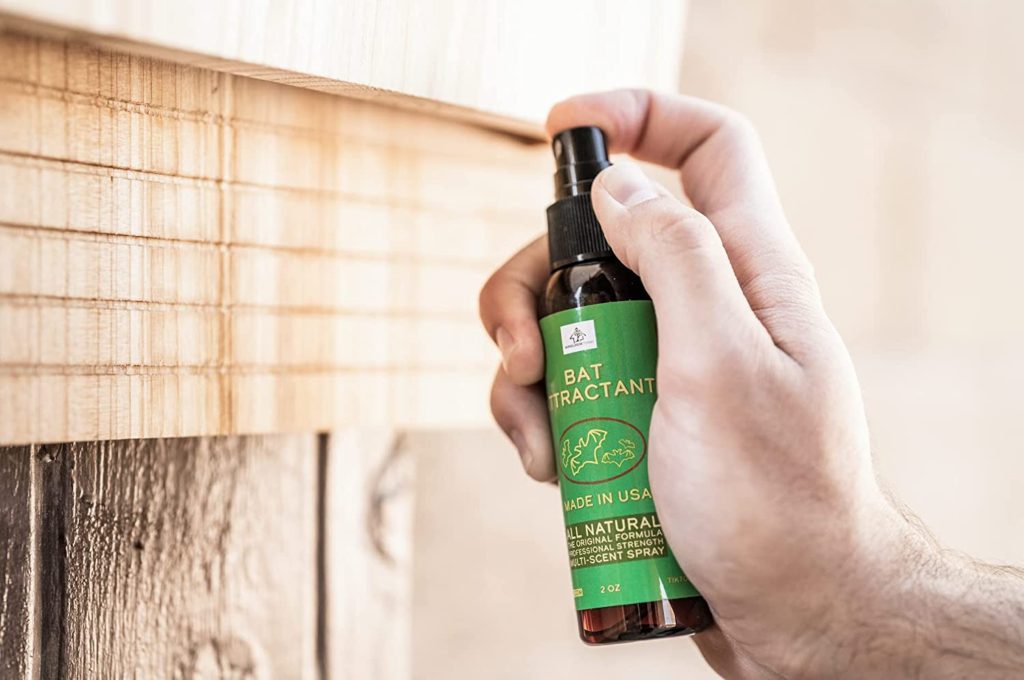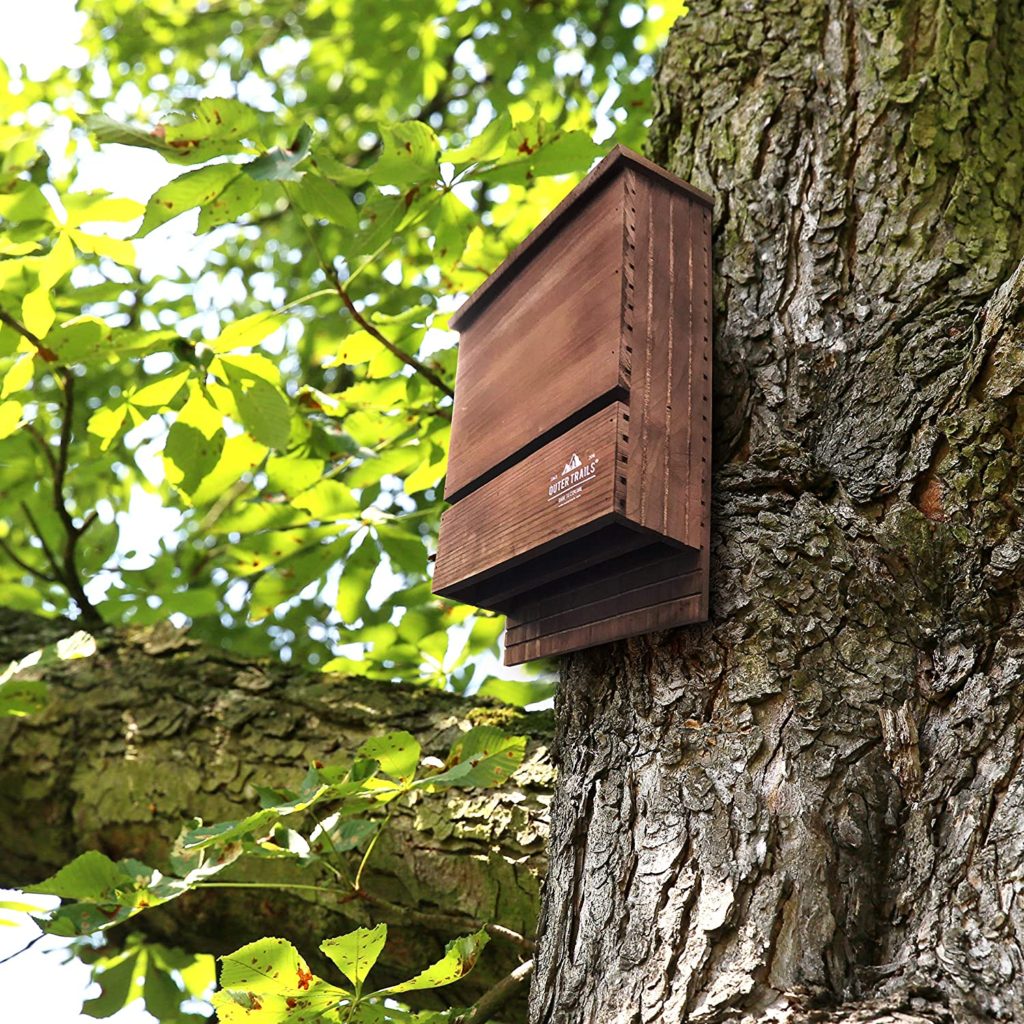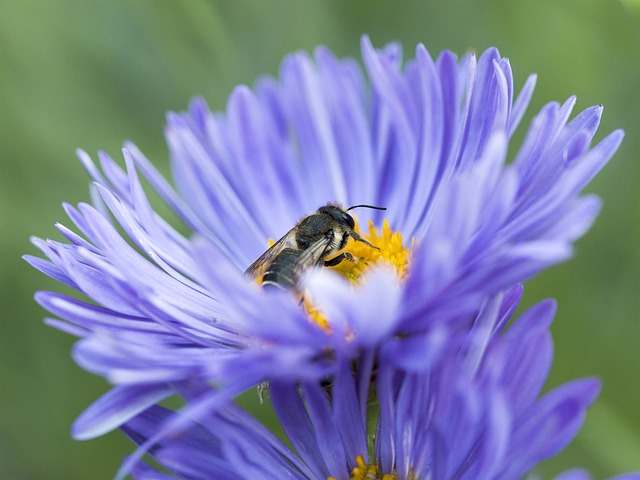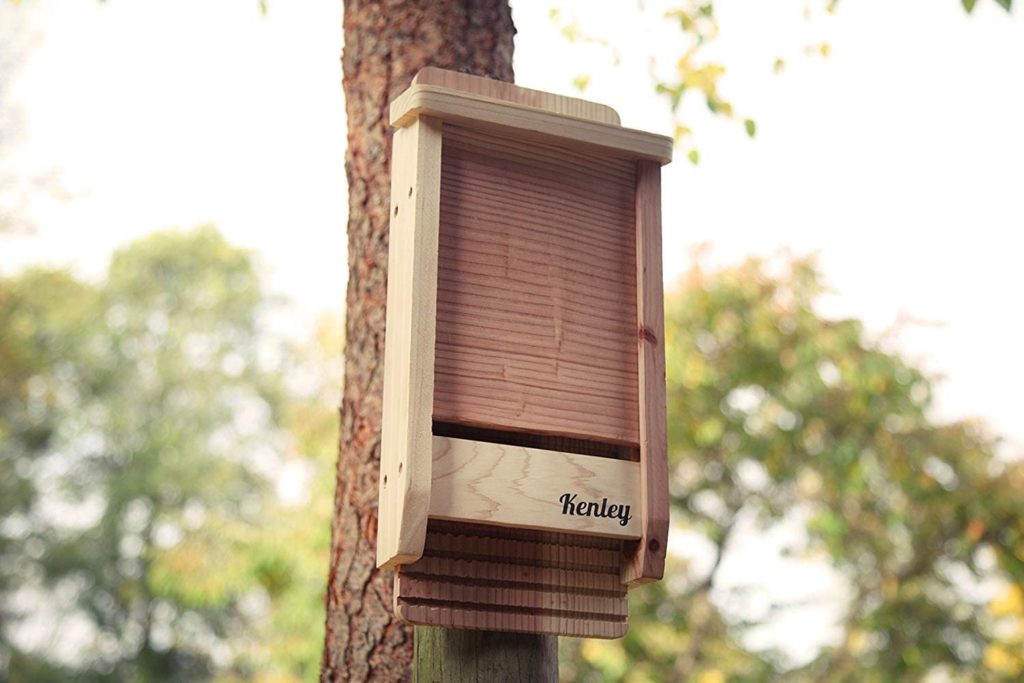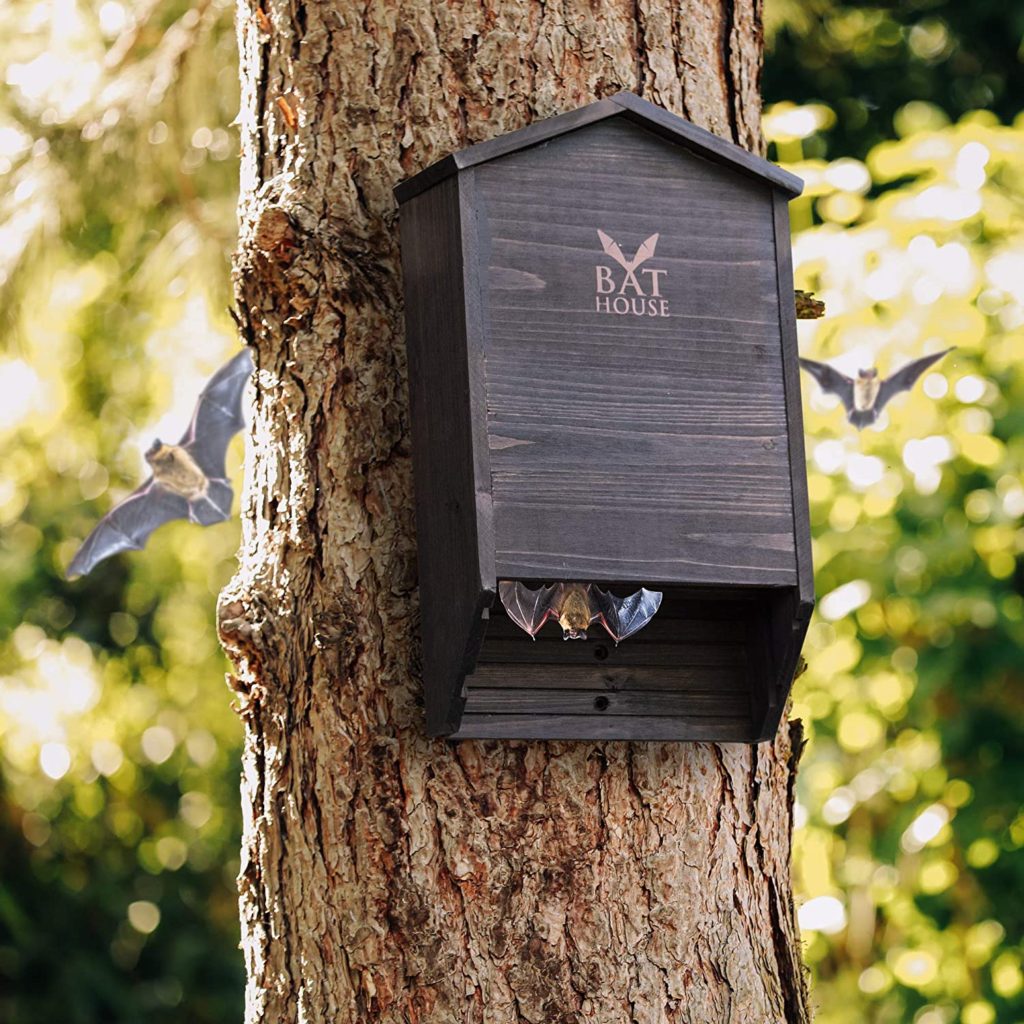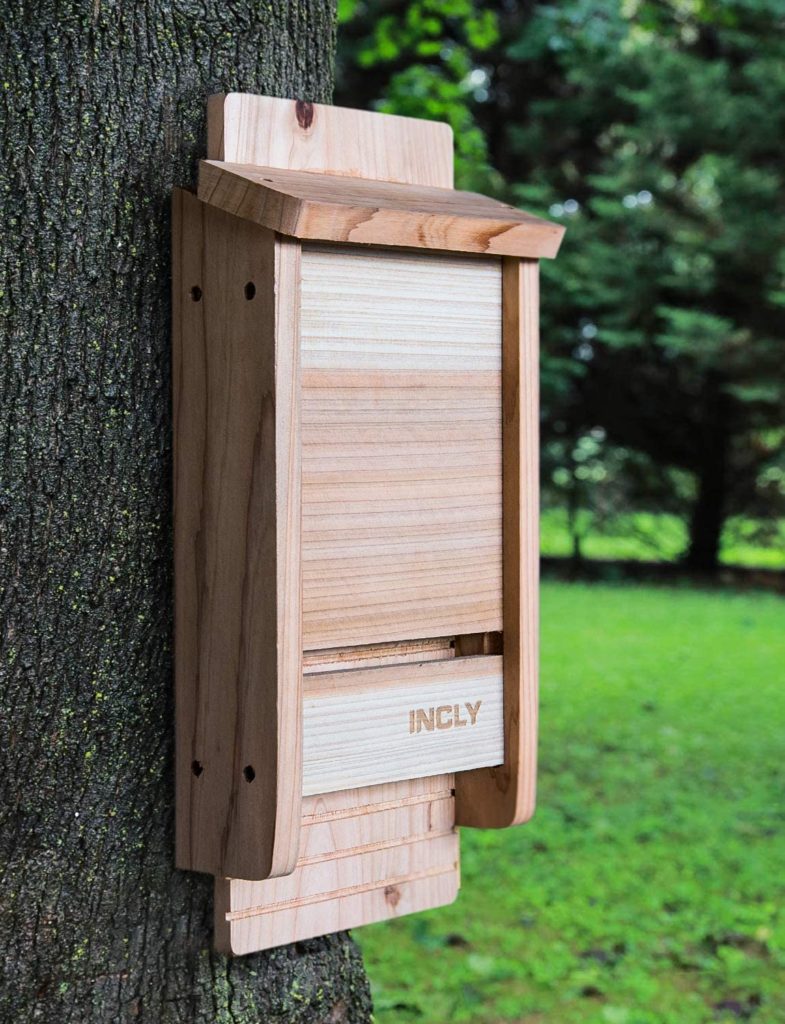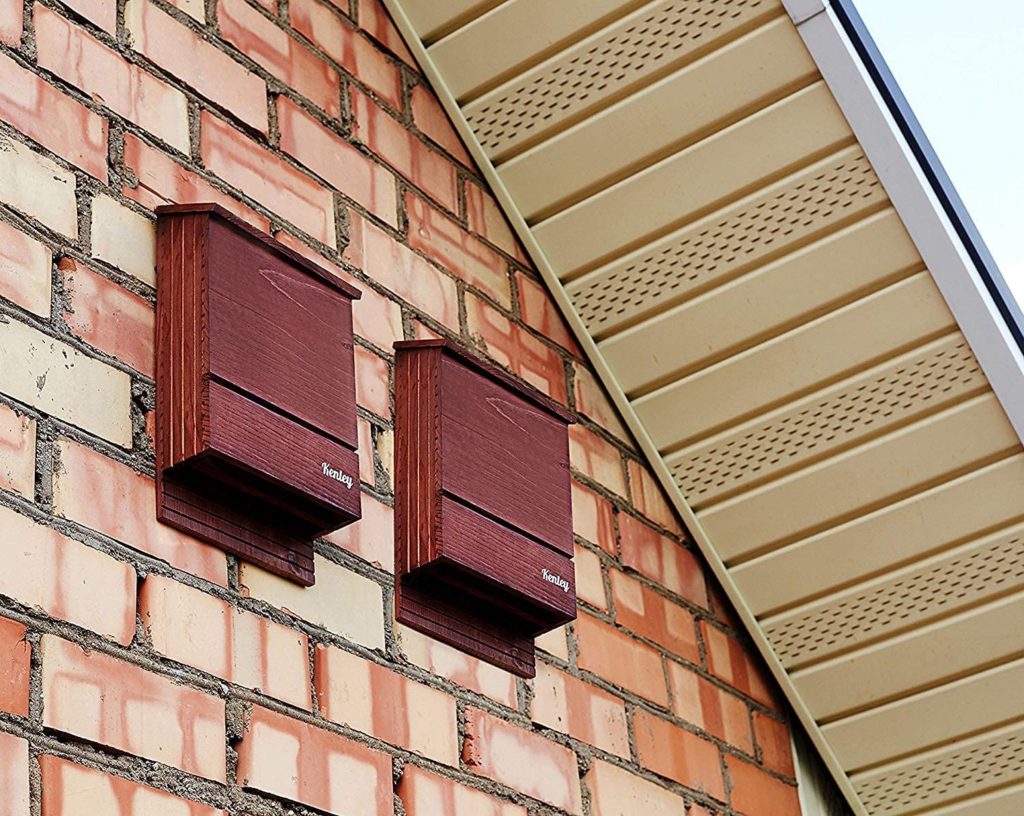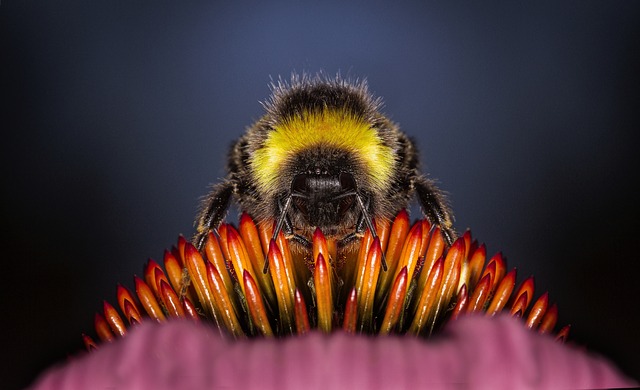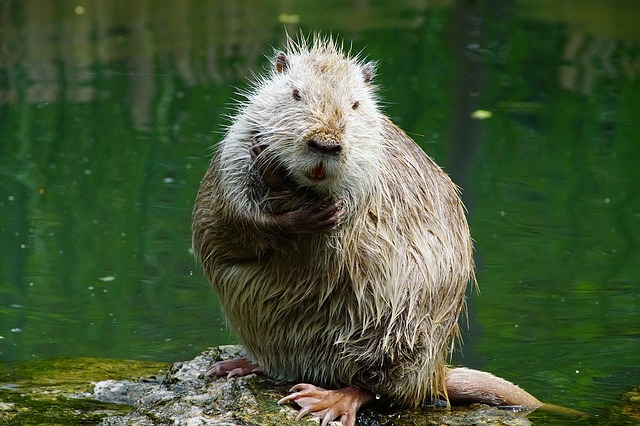
Nutria are large semi-aquatic rodents from South America. In the United States where they were originally imported for the fur industry, they are an invasive species. Despite their pest status, there are many interesting things about them. So here are some of the best nutria pictures to help show you just how unique they are.
Beautiful Nutria Fur
Nutria fur ranges from dark brown to a light yellow-brown in color. In fact, because the fur of the nutria is so attractive and similar in appearance to that of the beaver, nutria pelts are used to make fur coats.
Because nutria are an invasive species in the United States coats made from these pests are considered to be more socially acceptable than farm-raised furs. In contrast to the light-colored animal in the nutria picture below, in the fur industry, the darker shades of nutria fur are considered the most valuable.
Orange Nutria Teeth
Nutria are known for their large protruding and orange front teeth. The orange color is actually caused by an iron-containing pigment in the enamel of their teeth. And as they get older their teeth get more orange in color.
Adult Nutria
Adult nutria can get quite large. On average they reach from twelve to eighteen inches in length from head to tail and from nine to fifteen pounds in weight. Very big nutria can weigh close to forty pounds.
Baby Nutria
Unlike many other species, when baby nutria are born their eyes are open and they are full-furred. They can actually feed on vegetation right alongside adults within only a few hours after their birth. Young nutria will nurse from their mother for seven or eight weeks.
Nutria Swimming
While nutria can move well on land they are really at home in the water. They are very strong swimmers and can stay submerged for up to five minutes at a time. Nutria actually have webbed back feet which helps make them so agile when swimming.
Nutria Eating
The nutria is a vegetarian that feeds both in the water and on land. It eats aquatic plants, roots, tubers, rhizomes, insects, and snails. However, it will also eat grass and crops close to its habitat. Nutria use their forepaws to help shove their food into their mouths.
White Nutria
While it is rare sometimes albino nutria are born. These animals have a lack of pigmentation which causes them to be all-white with pink eyes. Albino animals generally have a much lower survival rate because they are easier for predators to spot.
Feeding Nutria
As herbivores nutria will eat various fruits and vegetables given to them by humans. However, feeding nutria is not recommended. They can carry parasites and also bacterial infections such as leptospirosis which can be transferred to humans.
Feeding them often causes more animals to move into the area. And an increased number of nutria burrows can lead to erosion along the water’s edge and the degradation of the habitat.
Nutria Removal
Nutria can cause a lot of damage. Their burrows cause erosion and structural problems for dams, dikes, and roadbeds along with docks and other structures. This invasive species is also known to eat crops. Therefore they are often trapped using live cage traps and removed from the environment.
Nutria Water Rat
It’s easy to see from looking at pictures of nutria just how similar they look to rats. They are often confused for extra-large rats, muskrats, and even sometimes described as water rats or giant swamp rats.
Nutria Tail
The nutria tail is round in shape and therefore can help to distinguish it from other similar-looking species. In contrast, a beaver’s tail is flat and similar in shape to a paddle, while a muskrat’s tail is slightly flattened. Unlike both beavers and muskrats, the nutria tail is covered in hair.
Nutria Muzzle
The nutria is known for having a few unique features. One of them is the distinct white patch on its muzzle which can clearly be seen in this and many other nutria pictures. Its orange teeth and webbed back feet are two other distinguishing physical characteristics.
Start Shopping for Nutria Traps!
How Does A Heron Catch Fish?
The great blue heron is well-known for its looks but also its fish-catching abilities. Whether in the wild or someone’s backyard pond these large birds are master hunters. So how does a heron catch fish? Here’s what you’ll want to know. Built For Success While herons...
What Direction Should A Bat House Face?
Buy on Amazon Bats are very particular when it comes to whether or not they will move into a bat house. One of the most important factors is the temperature inside, which will be strongly influenced by the direction that the house is facing. So what direction should a...
When To Put Up A Bat House
Buy on Amazon Bats can be a big benefit to your yard. But they can be picky when it comes to where they actually decide to roost. Knowing when to put up a bat house can help to tip the odds in your favor. Basic Seasonal Bat Behavior Many people don’t realize that in...
Bat Attractant: The Secret Weapon For Bat House Success
Buy on Amazon Purchasing a bat house is easy, however, having a colony of bats take up residence inside it is sometimes another story. To tip the odds in your favor using bat attractant can help. Here’s what you’ll want to know when considering using it. Bat House...
How To Attract Bats To Your Bat House
Buy on Amazon Having bats in your yard offers many fantastic benefits. So it’s no wonder that more and more people are installing bat houses in an attempt to get them to stay. However, you’ll first need to know how to attract bats to your bat house if you want them to...
The Buzz About Bee Gardens
Chances are if you’ve been paying even a little bit of attention, you’ve heard about the “beepocalypse.” Depending on the source, you’ve likely seen varying levels of concern. While some experts are simply following the phenomenon, others are downright alarmed....
What Does A Bat House Look Like?
Buy on Amazon Bat houses are shelters made specifically for bats. These flying mammals have special needs that houses are designed to meet. So what does a bat house look like? Well, read on and find out! Bat House Designs Houses for bats actually look like boxes. For...
What Is A Bat House?
Buy on Amazon What is a bat house? And better yet, why would you want one on your property? These are both commonly asked questions. Whether you’re just curious or have always wanted to have bats in your yard here’s what you’ll need to know. Bats are nocturnal...
The Top Bat House Benefits
Buy on Amazon A bat house is a specially designed shelter for bats. It provides them with a safe and convenient place to sleep. While they are great for the bats, there are many bat house benefits you can enjoy as well when you have one in your yard. Keep Bats Out Of...
Where To Put A Bat House
Buy on Amazon Where to put a bat house is an important decision. If it’s not in an appropriate spot, you may be putting your resident bats in danger. Or you may end up with an empty house since no bats are interested in living in it. So you’ll need to know a few...
Beneficial Garden Insects And Creatures Often Confused For Pests
There are many animals that we consider to be pests. However, many of them actually perform critical tasks and help to control the populations of much more devastating species. The following beneficial insects and creatures are ones you’ll want to keep around....



